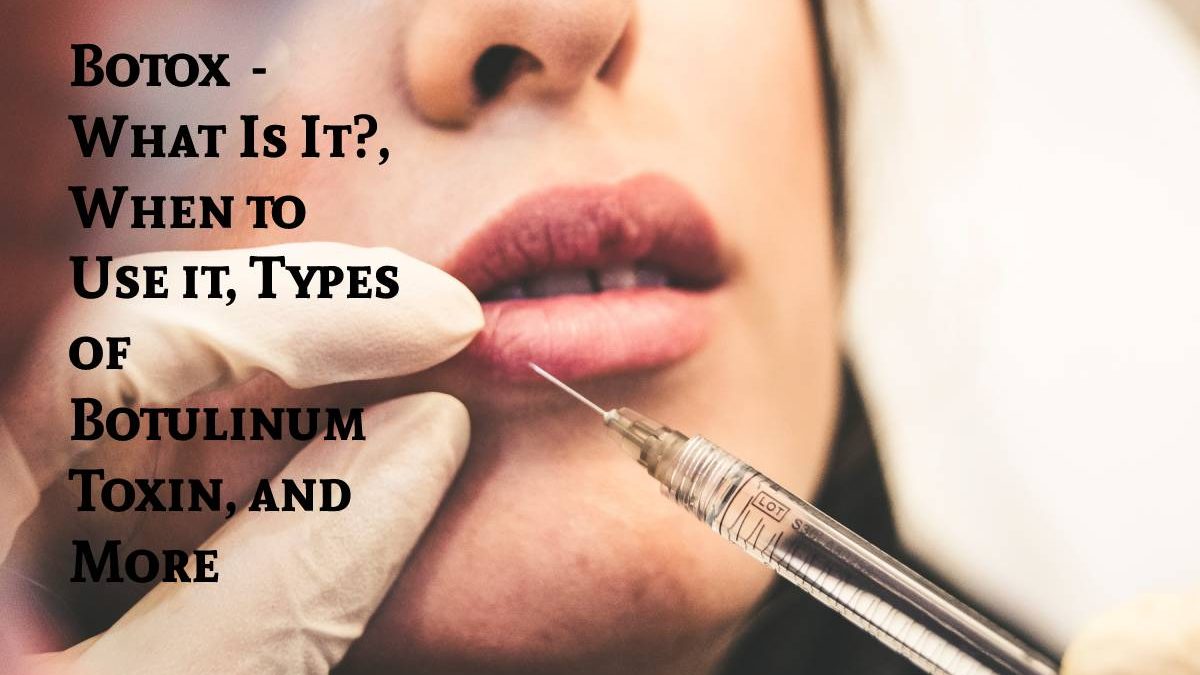Table of Contents
What is botox?
botox- Botulinum toxin is a nerve-affecting toxin (neurotoxin ) produced by a bacterium called Clostridium botulinum (responsible for a disease called botulism ). Botulinum toxin prevents nerve signals from being transmitting from nerves to muscles, causing temporary muscle paralysis without damaging nerve structures.
What is Botox used for?
The injection of botulinum toxin into the muscle through the skin temporarily eliminates or reduces both expression wrinkles (those that appear when making any movement or gesture with the face) as well as wrinkles between the eyebrows, neck, and “crow’s feet,” all of them due, in large part, to the contraction of the underlying muscles. The toxin temporarily paralyzes these muscles, leaving the skin smooth and the expression smoother and younger.
Botox: when to use?
The aesthetic treatment with botox is one of the most demands in the clinics of our country. Botox or botulinum toxin helps us to eliminate expression wrinkles temporarily. It is a toxin that, once injects, prevents the muscle from contracting. That is, it paralyzes it. This way, the wrinkle does not form. However, its effect is temporary and lasts about four or six months, depending on each patient. Many doubts haunt your head if you have considered undergoing a rejuvenating treatment with botox.
Wrinkles caused for the Sun they cannot be treated with botulinum toxin. And is that, for example, not all facial wrinkles are treatable with botox. Botulinum toxin affects only dynamic wrinkles or expression wrinkles, which are those that are formed as a result of making different gestures with the facial muscles. These wrinkles usually start in the upper third of our face (especially between the eyebrows), so this type of treatment is most often apply there.
As we have said, the effects of botox last between four and six months, and then (with the approval of our doctor), it will be necessary to repeat the treatment. Sometimes, over time, and as the applications are repeated, the effect of botox can last longer fewer and more spaced punctures are necessary.
Can it be used on the lower part of the face?
Attempts to correct wrinkles in this area of the face have shown variable responses (sometimes good and sometimes bad), with many side effects. Its use is currently not indicated to treat wrinkles at this level for all these reasons.
Types of botulinum toxin
Seven types of botulinum toxin are individually, from A to G. Toxins A, B, and F are the most potent. Types A and B are use for medical or aesthetic applications, with A being the most widely use.
Duration of Effects
Muscle paralysis appears on the second or third day after the botulinum toxin injection and progressively intensifies until the end of the second week. This term varies according to the muscle treats. However, it usually lasts four to six months, although the response varies from one patient to another and, in the same patient, from one place to another and from one session to another. Resistance may appear after several treatment cycles in a small percentage of patients. These resistors are generally long-lasting.
Is your application painful?
The botulinum toxin injection procedure is not uncomfortable and does not require anesthesia. Whenever, people are on antiaggregant (aspirin) or anticoagulant treatment, they should discontinue such treatment a few days before to avoid bruising.
Should any care be taken after injections?
A slight fleeting inflammation or a hematoma (bruise) may appear at the injection sites, with immediate social reintegration. However, it is recommended not to lie down, touch, or gesture with the treated regions in the three or four hours following the injections to prevent the toxin from moving to areas that do not want to be treat.
Adverse effects
Complications of the botulinum toxin injection procedure are rare, mild, and transient. They are dependent on the dose injected and include:
- Hematomas (bruises) at the injection sites.
- headache
- Flu-like symptoms
- The sensation of tension between the eyebrows.
- Moderately droopy eyelids due to excessive muscle weakness. It resolves in a few weeks.
Doctors should perform this treatment

Botulinum toxin injection should performed by maxillofacial or plastic surgeons or doctors specializing in aesthetic medicine in cabinet that include the necessary equipment.
Can Botox be combined with other medical-aesthetic treatments?
However, botulinum toxin enhances and complements other aesthetic treatments such as facial fillers, chemical peels, or microdermabrasion.
Other applications of botulinum toxin
Botulinum toxin can be using for many other conditions or illnesses, including:
- Dystonias (abnormal muscle movements).
- Blepharospasm (persistent contraction of the muscles around the eyes).
- Spasticity or rigidity, for example, in patients who have had a stroke.
- Urinary incontinence in people with paraplegia.
- Hyperhidrosis (excessive sweating).
- Sialorrhea (excessive production of saliva).
Conclusion
Botox prevents the muscles from contracting and stops the formation or visibility of wrinkles and fine lines. However, botox is injecting directly into the skin and strengths of the face with an excellent needle. The procedure takes less than an hour, and the patient will experience little or no discomfort.
Also Read: Pimple – Reason, Tips, Home Remedies, and More


